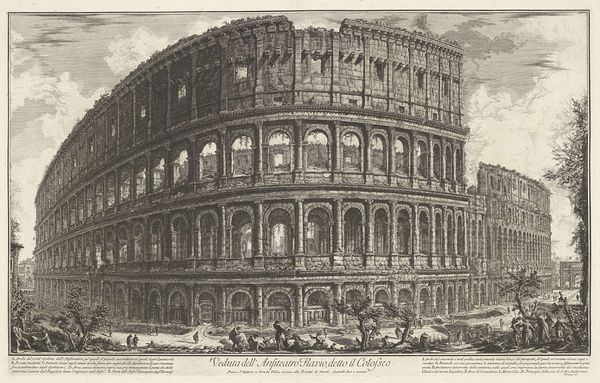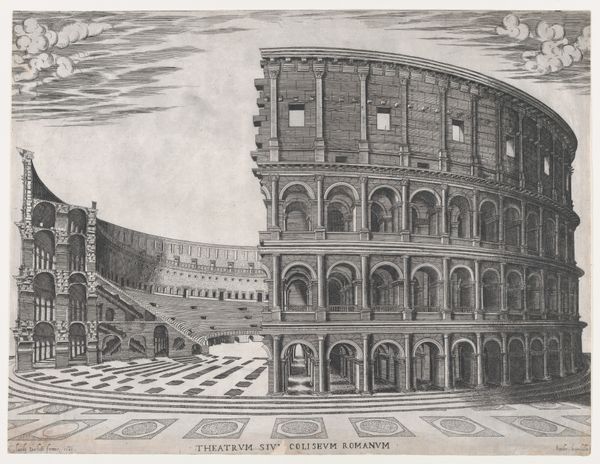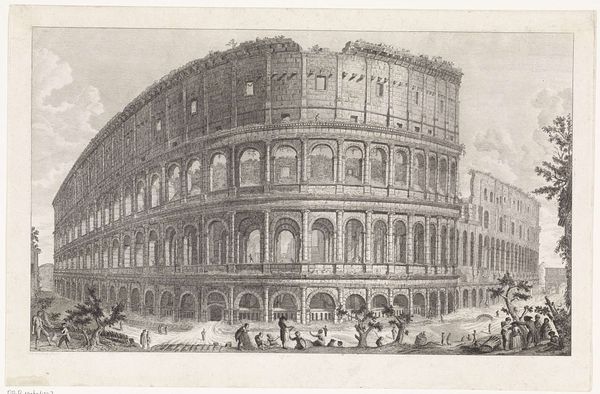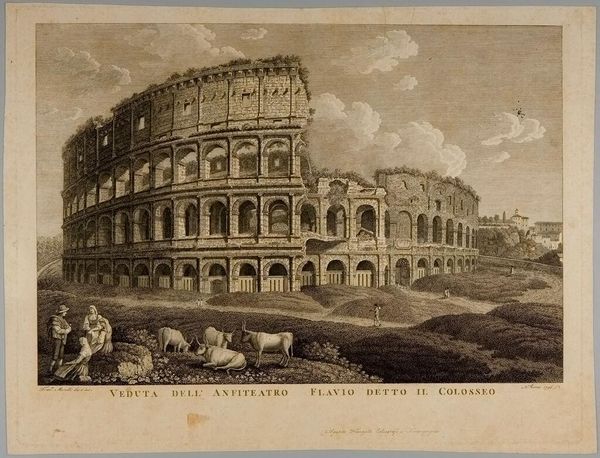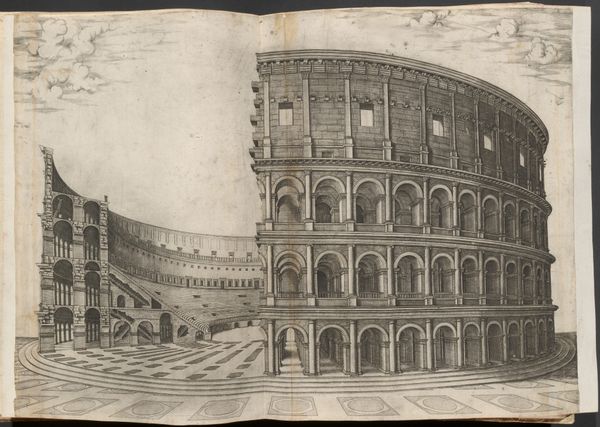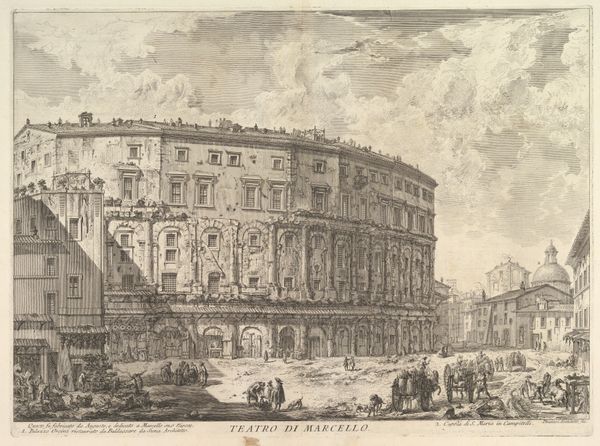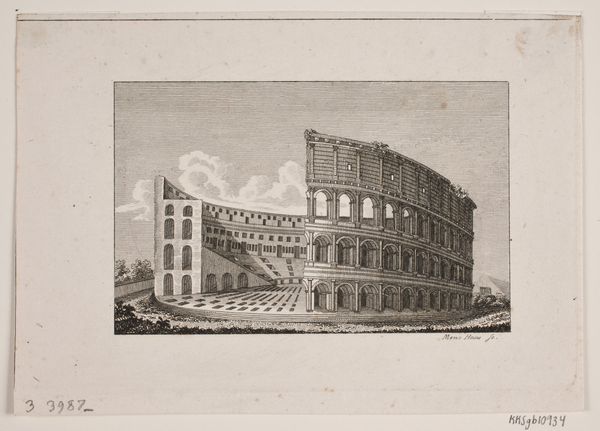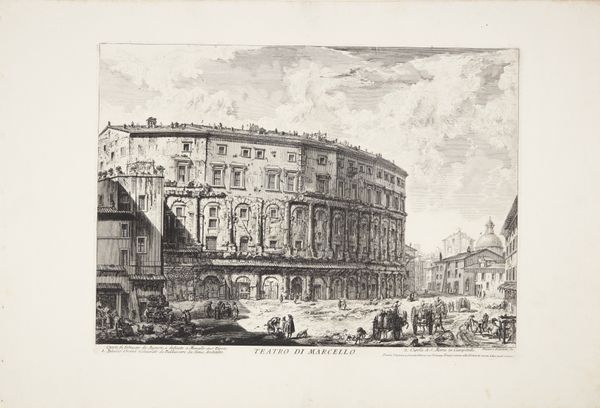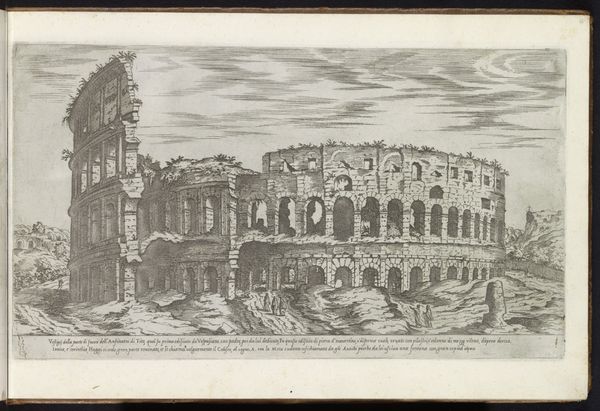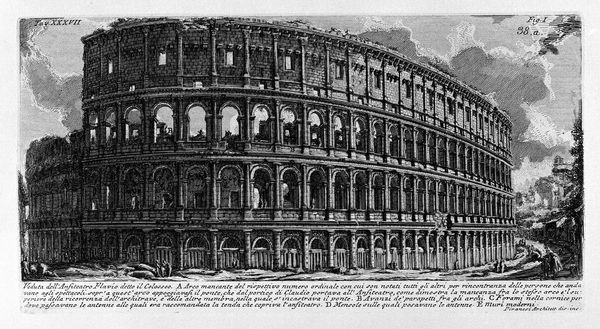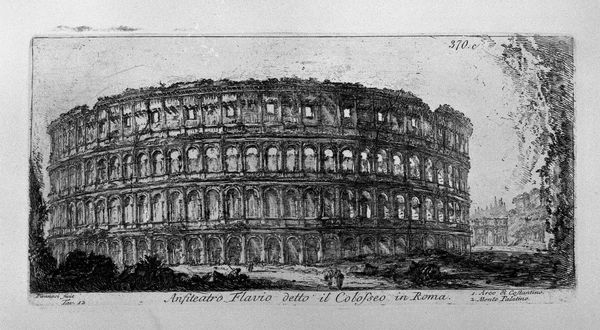
print, etching, engraving, architecture
#
aged paper
# print
#
etching
#
old engraving style
#
landscape
#
line
#
cityscape
#
history-painting
#
italy
#
engraving
#
architecture
#
realism
Dimensions: 17 3/8 x 27 1/2 in. (44.13 x 69.85 cm) (plate)21 x 28 15/16 in. (53.34 x 73.5 cm) (sheet)
Copyright: Public Domain
Curator: Welcome. Today, we’re looking at Giovanni Battista Piranesi’s "The Coliseum," a print rendered in etching and engraving, created between 1757 and 1761. Editor: Woah. The first impression is heavy. Like a beautiful, intricate ruin pressing down. There’s a sense of both grandeur and melancholy hanging in the air of this print, you know? Curator: That sense stems partly from Piranesi’s use of line. The density of the etched lines creates a powerful chiaroscuro effect, emphasizing the architectural immensity and decay. He plays with perspective, exaggerating the scale to create drama. Editor: Absolutely, the details pull you in close, but then the sheer size kinda hits you. And the people at the base, they look like ants! Did he want to remind us of the ephemeral nature of…well, everything? Curator: Piranesi was fascinated by the passage of time, yes. Look at the crumbling stonework, the missing sections. This print is as much about Rome's glorious past as it is about its present decline. He's creating what some scholars would describe as a ruin aesthetic, full of nostalgia, of longing for an idealized classical world. Editor: A longing tinged with fear, maybe? It's not just a picturesque ruin, it has weight. Like a warning. Does his composition try to make us question what our civilization leaves behind? What ruins *will* we leave? I'm just spitballing, though... Curator: Interesting, considering the placement of figures that gives context to your feeling, I think! The figures appear to wander amidst the colossal ruins, insignificant in comparison, which creates a contrast. Perhaps we are encouraged to ponder the power and fragility inherent to civilization. Editor: And he does all this just with lines and shadows. Remarkable. You could spend hours just tracing the cracks in the stone with your eyes. Feels almost tactile. Like you can smell the dust. Curator: The material quality of the print is really interesting to observe closely, wouldn’t you agree? Notice how Piranesi doesn’t attempt to romanticize or smooth over the cracks and breaks within the architecture; he invites the viewer to explore the textures in precise detail. Editor: For sure! Makes you wonder, what future archaeologist will make of *our* ruins, of our legacy? Anyway, Giovanni’s artwork made my brain wander today and is so thought-provoking! Curator: Yes, the dialogue created between its form and content can spark enduring discussion around legacy and the ephemeral, leaving audiences in anticipation about what could come of his narrative on civilization!
Comments
minneapolisinstituteofart almost 2 years ago
⋮
The Colosseum is the most famous remnant of ancient Rome. Also called the Flavian Amphitheater, it was built under three successive emperors of the Flavius family (Vespasian, Titus, and Domitian) in the years 76 to 92 CE. Today many sports stadiums can trace their oval design to this masterpiece of Roman architecture. Piranesi’s skewed perspective makes us feel as if we were looking at the rounded corner of a square building, a view that apparently gave rise to squarish stadium layouts, such as the late, great Ebbets Field in Brooklyn, New York, once home to the Brooklyn Dodgers.
Join the conversation
Join millions of artists and users on Artera today and experience the ultimate creative platform.
